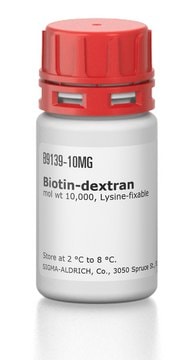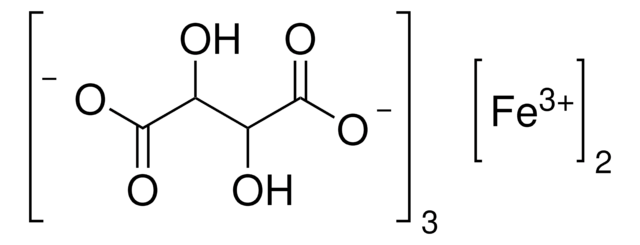D8517
Iron–Dextran
95-105 mg/mL (Iron content), solution
Synonym(s):
Ferric hydroxide dextran complex
About This Item
Recommended Products
biological source
synthetic
Quality Level
sterility
aseptically filled
Assay
95-105 mg/mL (Iron content)
form
solution
contains
0.5% phenol as preservative
composition
Iron, ~100 mg/mL
color
brown
useful pH range
4 - 6.5
storage temp.
room temp
InChI
1S/Fe.H2O4S/c;1-5(2,3)4/h;(H2,1,2,3,4)
InChI key
MVZXTUSAYBWAAM-UHFFFAOYSA-N
Looking for similar products? Visit Product Comparison Guide
Application
Other Notes
Signal Word
Danger
Hazard Statements
Precautionary Statements
Hazard Classifications
Carc. 1B - Skin Sens. 1
Storage Class Code
6.1C - Combustible acute toxic Cat.3 / toxic compounds or compounds which causing chronic effects
WGK
WGK 3
Flash Point(F)
Not applicable
Flash Point(C)
Not applicable
Certificates of Analysis (COA)
Search for Certificates of Analysis (COA) by entering the products Lot/Batch Number. Lot and Batch Numbers can be found on a product’s label following the words ‘Lot’ or ‘Batch’.
Already Own This Product?
Find documentation for the products that you have recently purchased in the Document Library.
Customers Also Viewed
Our team of scientists has experience in all areas of research including Life Science, Material Science, Chemical Synthesis, Chromatography, Analytical and many others.
Contact Technical Service













